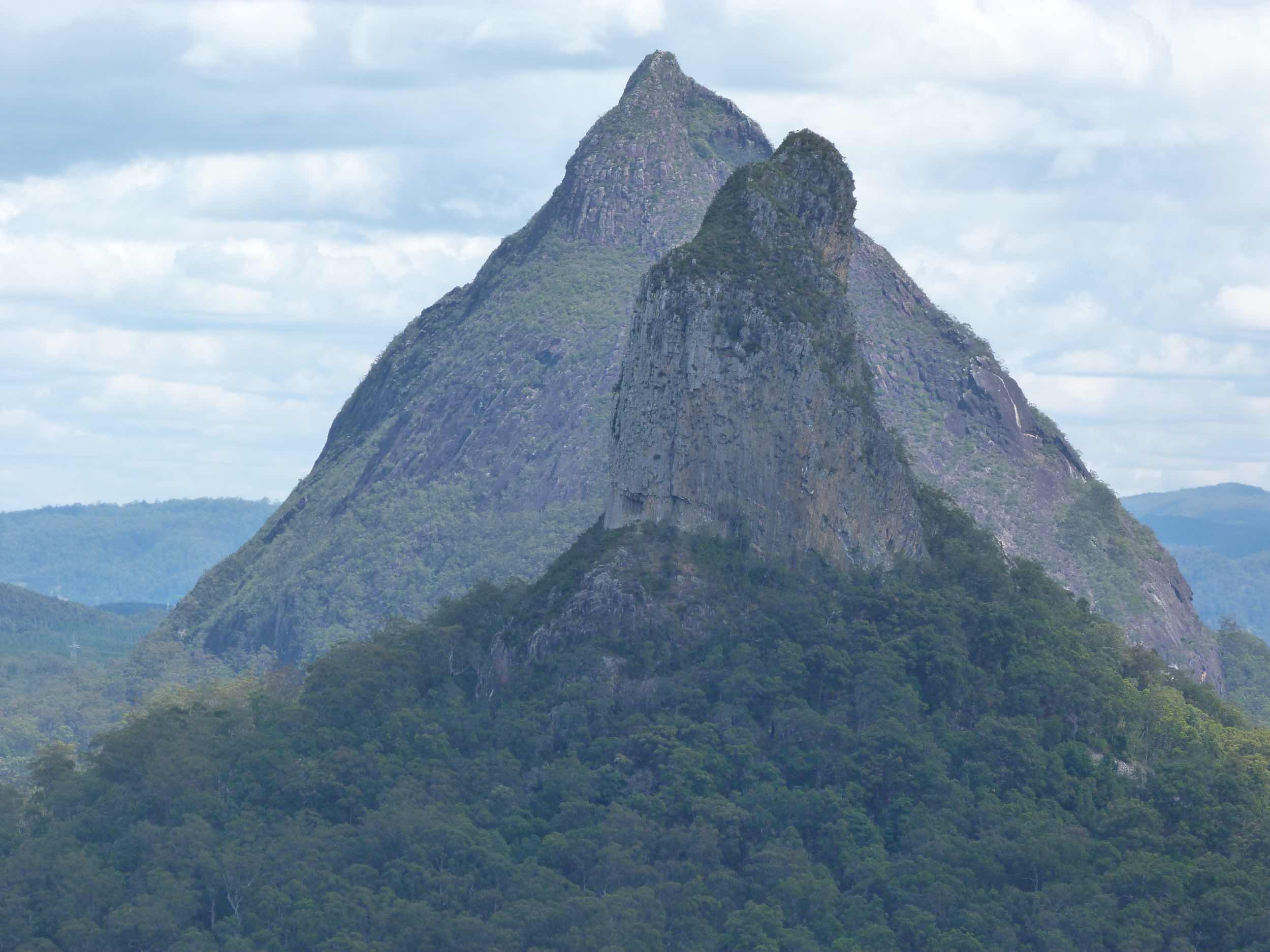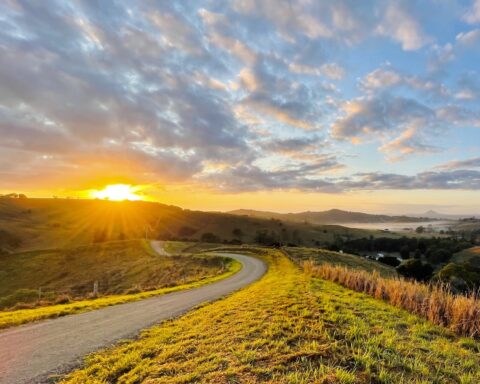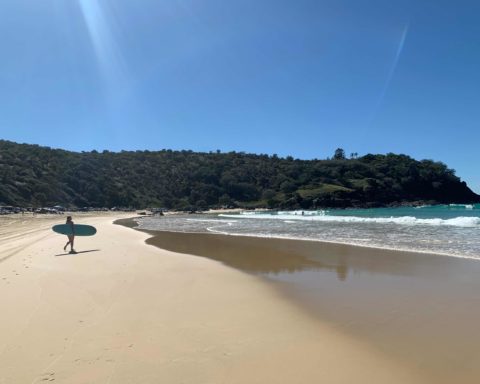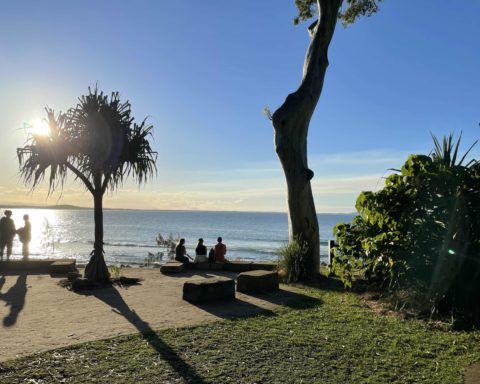A Couple of Mountaineering Poms Recount Their Experience Climbing the Glass House Mountains Walks
In 2009, my youngest daughter Rebecca emigrated to Australia with her then-boyfriend, and I guess it was inevitable that I should visit at some stage in the future. As a long-term mountaineer and erstwhile rock climber, I remember wishing she’d found a New Zealand boyfriend! Australia is not renowned for its mountains. Nevertheless, a little bit of research prior to my first trip indicated that there were a number of decent hills and mountains within range of Brisbane, where my daughter was now living.
I was particularly taken with a group of small hills north of the city called the Glass House Mountains. What they lacked in height, they seemed to make up for with distinctive character, given that they were old volcanic plugs. As a Yorkshireman, I was interested to find out they got their name from Captain Cook, who, after bumping into Australia, sailed north along the coast back in the 18th century, naming landmarks as he went. The individual hill names are aboriginal in origin and are part of a story worth discovering when taking on the Glass House Mountains Walks.
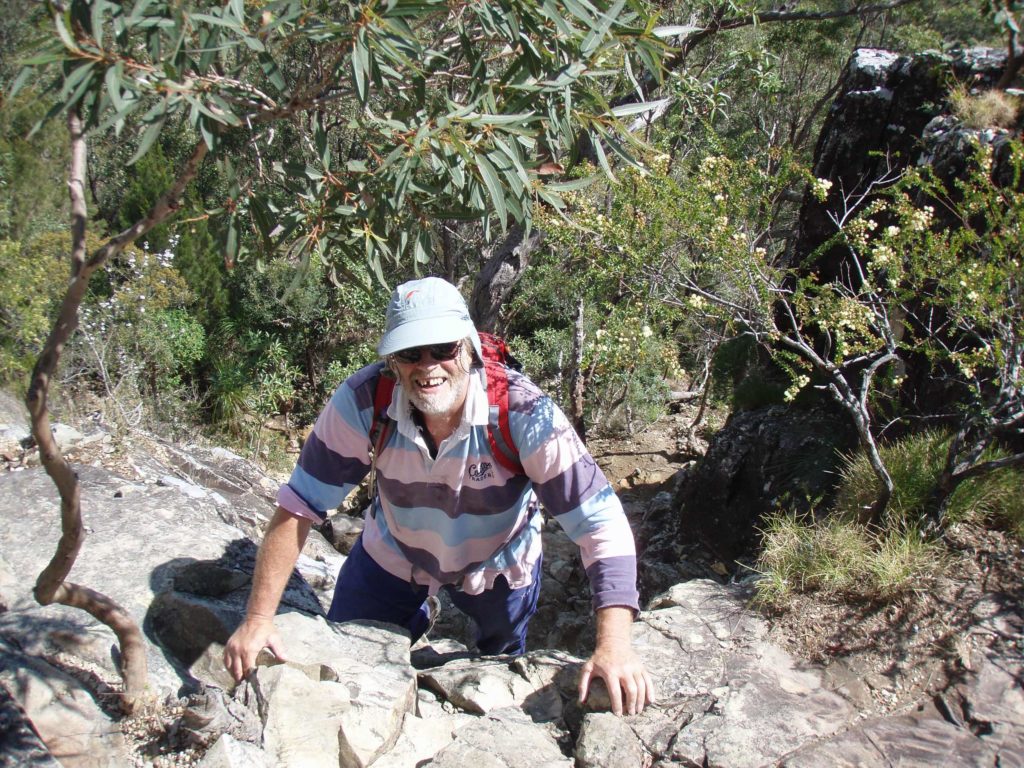
Embarking on the Adventure: First Impressions and Preparations at Mount Tibrogargan
When, in August 2011, we got our first opportunity to visit, they were certainly on the list. By this time, we knew a bit more about these hills, but, as you might expect, there were a number of family matters to attend to before I, along with my wife and long-term mountain companion, could start exploring. Forward a couple of weeks and, with a very basic camper van as transport, we were able to navigate, with some difficulty, Brisbane’s northern suburbs and set off up the Bruce Highway. We were impressed at first sight and headed, with some trepidation, to the Tibrogargan car park. Having kitted up with shorts, a T-shirt, lightweight boots, sunhat and sunblock, we followed the trail into the bush and were very shortly confronted by a chilling notice which basically reminded us that it was easy to die on this small hill.
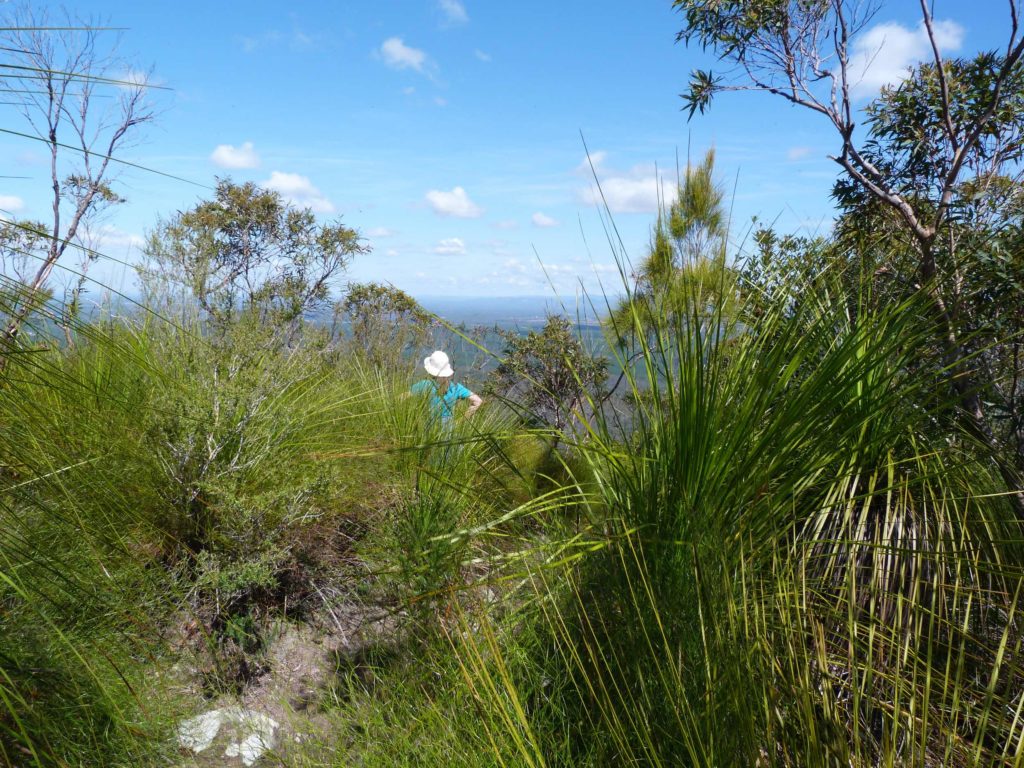
Challenges and Rewards: Navigating Mount Tibrogargan’s Steep Trail
Above the notice, the trail reared up into a steep and slightly loose scoop, which, once negotiated, led onto a magnificent sweep of slabs set at a deceptively friendly angle which obviously stretched a long way above us, cutting through the bush. Previous experience suggested that what goes up must come down and that this might prove to be the main difficulty on Tibrogargan. So, as we climbed, we picked the easiest line and carefully noted this for our return. As we climbed, the exposure grew, and we proceeded with great caution. Once the angle eased, we were able to scamper along the trail to the summit. Although there are views, they are better described as glimpses through the bush. This was a bit underwhelming for the Poms, who were much more used to open views from hilltops, but, in fairness, the term bushwalking says it all!
The Intensity of Climbing Mount Tibrogargan
Thankfully, our caution on the way up paid off as we came down with minimum fuss, passing two young lads on the way up and, at the scoop, a couple who had managed to freak themselves out before even reaching the meat of the route. My advice, which was solicited, suggested that if they were not coping at this point, they might get into real difficulties a couple of hundred feet higher. They backed off, and we drove north to do a mini-tour of Queensland. I believe this walk-up Tibrogargan carries an Aussie grade of 5. In the UK, it would be classed as a Grade 3S scramble, which is just about on the limit of what you might consider a walk rather than a climb. The S stands for seriousness and, whilst it might be down to Pom timidity, an accident on this hill could well have life-changing consequences.
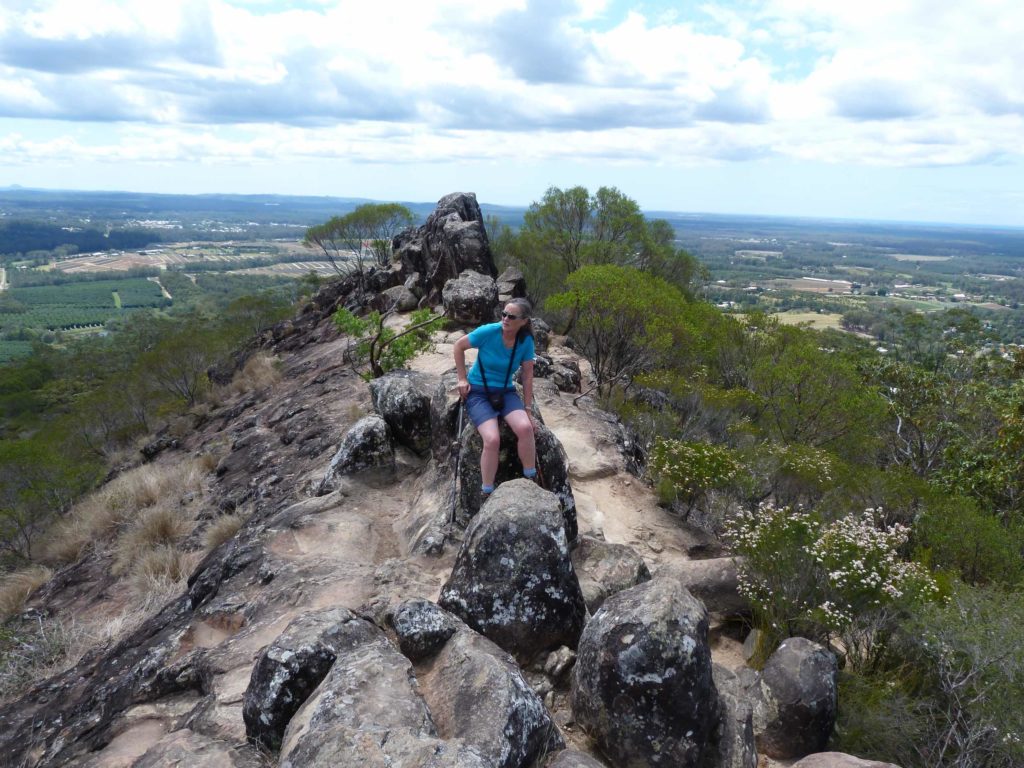
Climbing Ngungun: A More Accessible Gem Among the Glass House Mountains
That left three of the major Glass House Mountains Walks still to do. We had aspirations to do the others but quickly found that temporarily, two Coonowrin, permanently, and Beerwah were out of bounds. We had aspirations to do Beerwah, but unfortunately, a major rockfall led the National Park to close the trail, and enquiries at the visitor centre indicated that this would not open during this trip. So that left Ngungun, which we tackled just before returning to the UK.
It’s a short walk with easy rockwork along with a splendid but not exposed summit ridge to a great viewpoint. A subsequent visit found that much path work had been done to make it even easier. I would recommend this to anyone who wishes to do a hill in the Glass House Mountains, although you will have to share it because it is popular, particularly at peak holiday times. An early start might avoid the crowds.
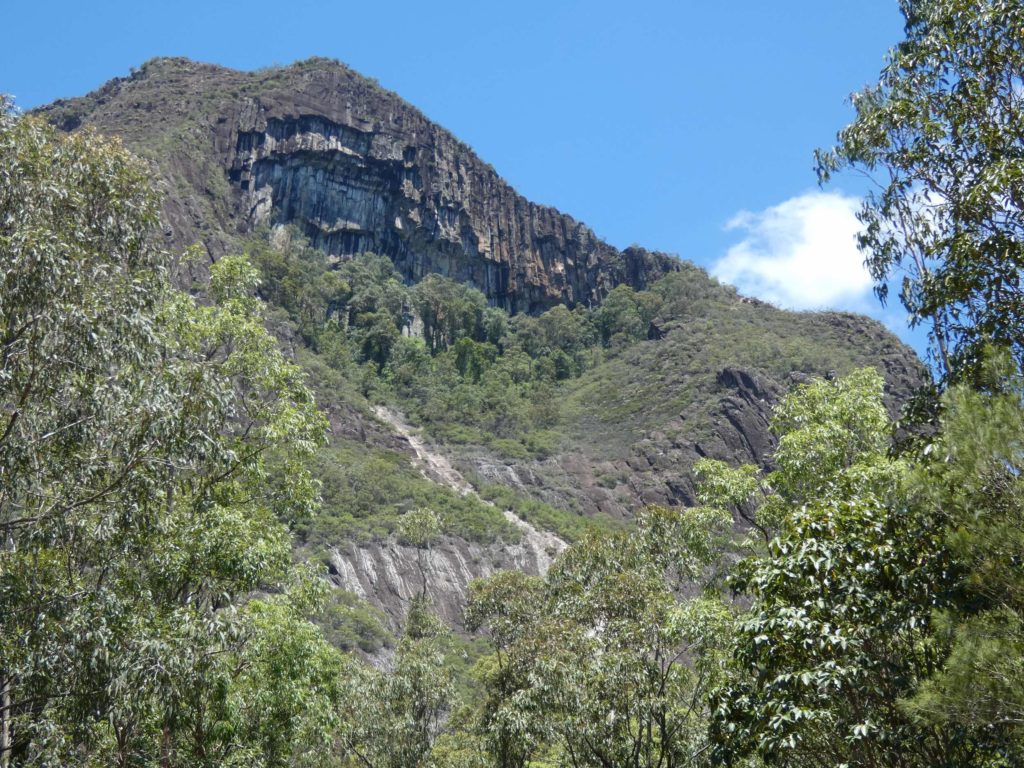
Perseverance Pays Off: Tackling the Challenging Ascent of Mount Beerwah
When we returned in 2014, our hopes of doing Beerwah were dashed again – it was still closed! We tried again in 2017 but were defeated again. Not by closure this time but by rain, and we rescued the day with an enjoyable steep ascent of Mount Coolum just south of Noosa. Very worthwhile and the best mug of iced coffee in Queensland from the tea wagon at the start of the trail. Lack of time meant that Beerwah had to wait but, on our next return in late 2018 it was high on the ‘to do’ list. An early start saw us leaving the trailhead car park at 8.00 am, and shortly afterwards, as we arrived at the bottom of another ribbon of slab through the bush, we bumped into a couple who had just finished their descent. They told us it was starting to warm up.
The obvious way up the bottom slab proved too risky for us in sloppy boots so we shuffled to the left and went up a corner onto the slab. Above the slabs just kept coming with decent ledges between sections. We kept climbing and sweating, the couple’s comment proving to be spot on. With some relief, we reached the big halfway ledge under the towering and overhanging summit cliffs. Fortunately, this was in the shade, and we took a few minutes to try and cool down.
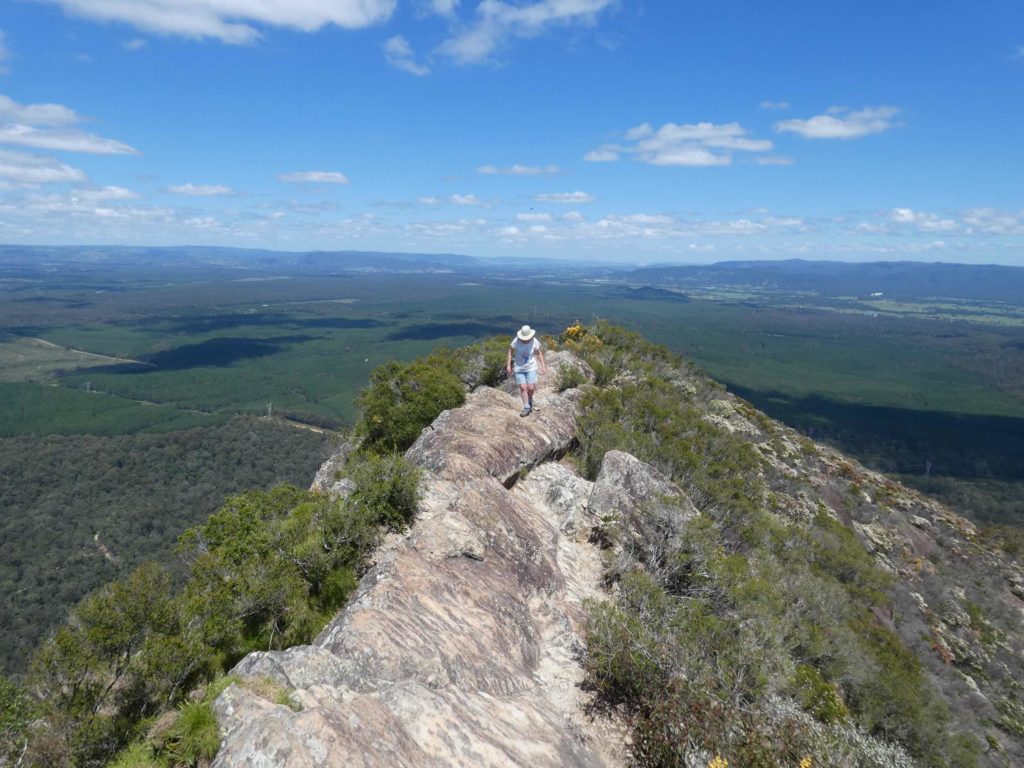
Conquering the Summit: The Rewarding Journey to the Top of Mount Beerwah
The ledge itself is a fascinating place with some interesting rock features caused by weathering and, in places, by collapse. Once we realised that cooling-off might be difficult, we pressed on following the trail rightwards directly under the cliffs. Where they finished the trail lead up round the corner onto the shoulder of the mountain. The rough path was interspersed with some interesting little rock problems which were made more difficult by the heat. Eventually, we ended up on a short but well-positioned summit ridge which leads quickly and easily to the top with a superb view of the coast and the surrounding countryside. A light prolonged our stay on the top and, thankfully, a cooling breeze. We took pictures, and 20 minutes later, when the breeze disappeared and we started to fry, we turned our minds and bodies to the decent.
Fortunately, with a liberal application of the arse brake, the descent proved to be easier than anticipated, and at the base of the slabs, we found the easy way off, which we had missed on the way up. Despite finding the descent easier than expected, this is, again, like Tibrogargan, not a place to be caught out in the rain or if you do not have a head for heights. An accident could have very serious consequences. It was so hot when we scrambled down the last rocks that Angela burnt her hands and had the blisters to prove it. Nevertheless, we strolled back to the car, pretty chuffed with ourselves at having, at last, knocked the bastard off!
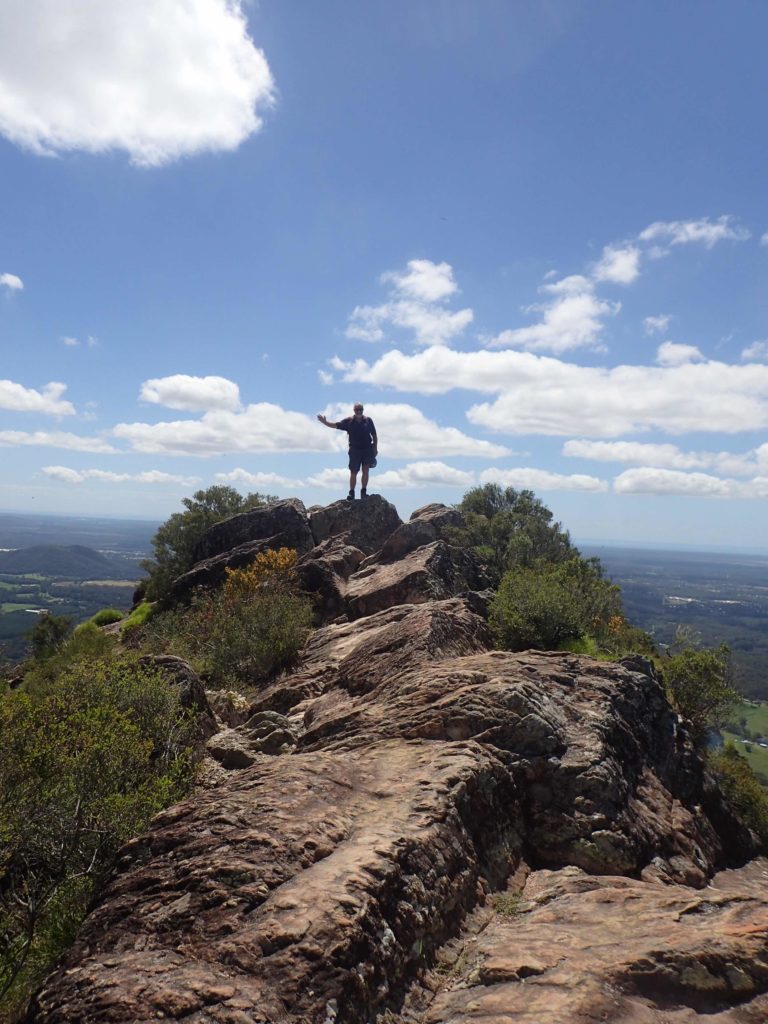
Glass House Mountains: Diverse Adventures for Every Level of Explorer
If you are staying in Noosa and looking for something exciting to do, then the Glass House Mountains are within reach and could well provide that adrenaline kick. They are also convenient for a quick ‘jolly’ if you are heading north along the Bruce Highway en route to Noosa. I believe that a rock climbing background was a distinct asset on both Beerwah and Tibrogargan. If something more sedate is required then try Ngungun or one of the other lower hills or one of the low-level trails such as the Trachyte Circuit. The local National Park visitor centre is very useful, with knowledgeable staff, and trail notes can be found online. We have used their trail notes, various websites that provide similar information and, especially, ‘TAKE A WALK’ in SE Queensland by John and Lyn Daly, a bumper fun book to what is on offer in the region.
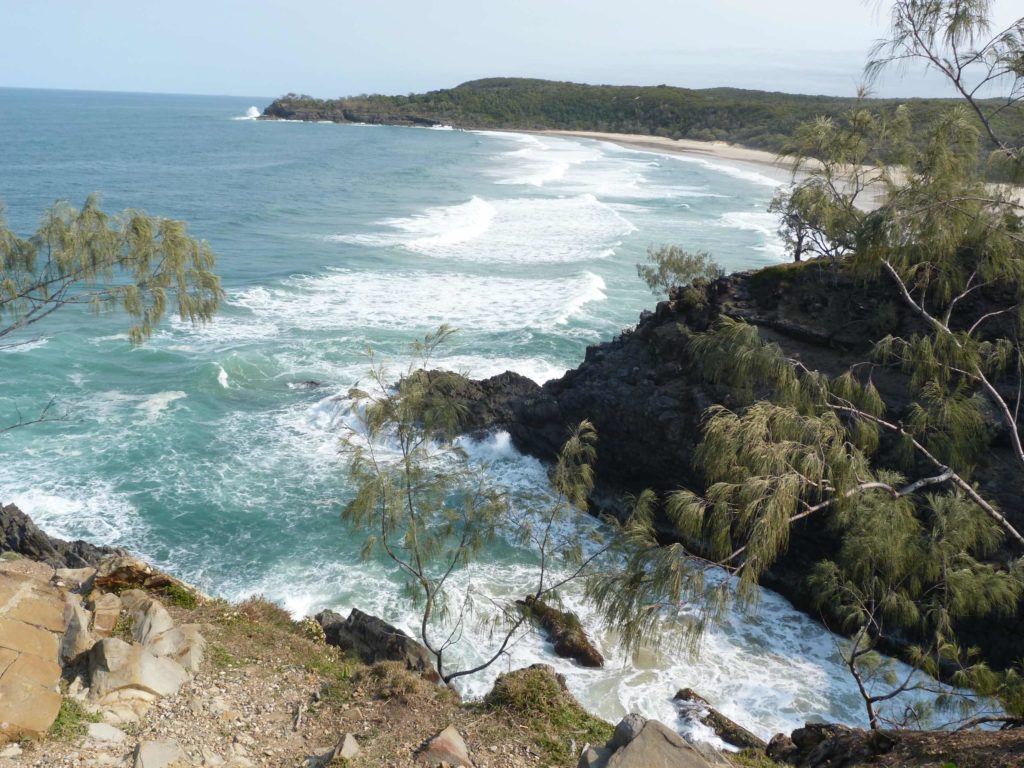
Staying in Noosa
If you are staying in Noosa and the idea of driving to the Glass House Mountains for some bushwalking does not rock your boat then fear not! Plenty of local options are available without using the car in an area rich with native flora and fauna. The Noosa community has a long history of concern for the environment and protecting the local and, in some cases, endangered species. Given the popularity of Noosa, this must be an ongoing task, and it is thus essential that all visitors tread lightly as they say, “leave only footprints, take only pictures”
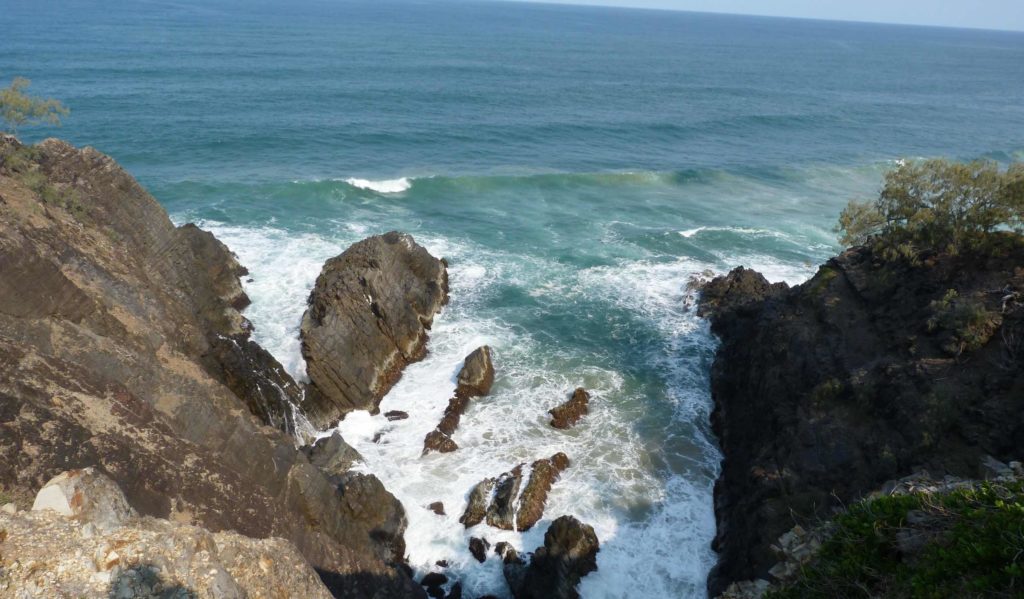
Noosa Coastal Track
We particularly enjoyed an early spring afternoon stroll around the headland going out by Alexandria Bay to Hells Gates and returning via Winch Cove, Dolphin Point and Tea Tree Bay. You could do much worse than start with this walk as an introduction to what the area has to offer before going on to conduct your own explorations. We are already looking forward to our next visit to this fabulous part of the world.
Booking.com
